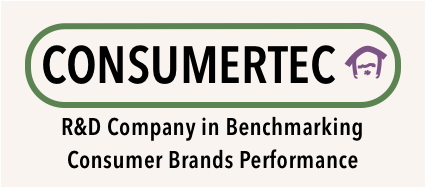|
Global
consumer industry needs to
create and sustain the right
value equation for consumers and
companies.That is imperative.
In
1994 we started our journey in
the world of representing market
realities at lab conditions.
Instead of implementing well
known standardised lab
methodologies, we intentionally
devoted our best technical and
scientific efforts to design
protocols, build equipments,
validate methodologies, develop
computer algorithms, and applied
recent scientific principles to
represent as much as possible
consumer relevant practices as
well as to model and understand
consumer benefit perceptions at
real environments.
Consumer-centred
Laboratory Experimentation
Our
laboratory facilities are
focused to model and simulate
consumer's realities and
perceptions. Here we conduct
'in-vitro' and 'in-silico'
studies, physical and virtual
experimentation, highly relevant
to emerging markets and
scenarios. We have build unique
prototyping, lab, robotics,
photonics, nano sensors, digital
and software capabilities as
well as we have nurtured
experienced trained panellist
for visual, olfactory and
tactile sensory analysis.
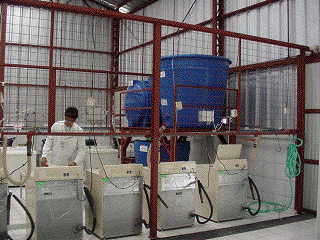
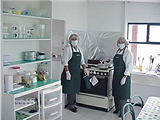
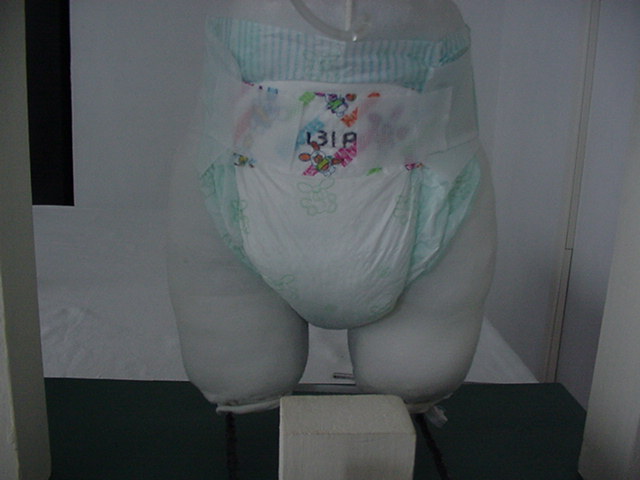
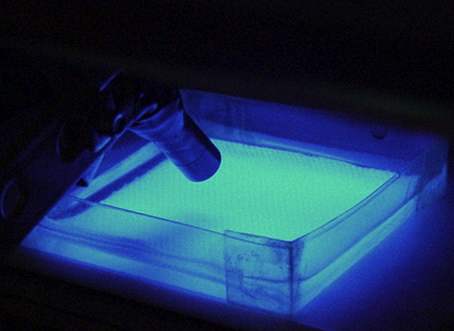
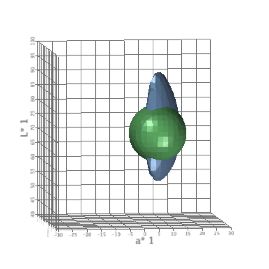
|
In-vitro
Experimentation.
To evaluate different
attributes involved in
products use. Our
research strategies use
standardised and
innovative in-house
validated methods,
taking into account
actual using conditions
and relies on a broad
statistical base during
its design, execution
and data analysis.
Quantification are based
on instrumental data
and/or sensory responses
provided by consumers
and/or trained panels,
taking as a point of
reference consumer's
actual evaluation
criteria as well as the
market scenarios in
which evaluations occur.
Special attention has
been put to conduct
instrumental evaluation
of results with
relevance to visual
assessment by consumer's
eyes. CONSUMERTEC has
designed and implemented
lab simulation of:
- laundry, including
washing and drying
indoor and outdoor,
machine and hand
procedures
- dish-washing, hand
procedures with
liquids, structured
liquids, creams or
bars, including
soaking of stuck food
on pots and pans
- baby diapers use
during day and night
- food processing at
home kitchen
- household surfaces
cleaning
|
In-silico
Experimentation.
Rapid changes in
computational capabilities
at affordable prices are
offering new alternatives
to 'in-silico' innovation
activities. Product,
brands, consumers and
their interactions are now
capable to be virtualised,
specially, thanks to
recent mathematical models
of consumer perceptions.
DETERTEC has built
innovative systems based
on the powerful scripting
and graphical capabilities
of JMP software.
JMP™ is
a trade mark of SAS,
Cary, NC, USA. www.jmp.com
|
Optical
Spectroscopy
Technologies. Based
on recent developments on
photonics and thin film
technologies as well as on
in-house data processing
scripts using JMP
software, DETERTEC has
integrated several
hardware and software
components from different
suppliers focused to
conduct spectrometric
measurements as close as
possible to real energy
interaction found in the
market. Absolute
spectrometric measurements
are rested on in-house
calibration procedures
traceable to international
standards.
We have built customised
non-contact mini
spectrofluorimeters to
accurately determine, in
absolute terms,
spectroscopy properties of
fluorescent materials in
areas less than 6 mm2,
full traceable to
international standards.
|
Organic
Vapour Nano-sensors.
A combination of
individual thin-film
carbon-black polymer
composite and new nano
chemiresistor sensors,
configured into an array.
The final response is a
pattern which is usually a
unique characteristic of
the total combination of
odours substances present
on a specific space. Using
this technology one odour
molecule can sensitises
different sensors and one
sensor can detect
different odour molecules,
in line with the human
olfactive system.
The device is currently in
use to obtain pattern
responses of odour
substances present at
different consumer
products head-spaces or to
characterise different
surfaces head-space like
hair, skin, cloth, foods,
home surfaces, as well as
to characterise market
relevant olfactive
scenarios like kitchen,
bath, bed, living and
laundry rooms, with the
intention to understand
how natural malodorous in
those environments are
linked to product’s
consumer benefit
perception.
|
|

|
How
do we work? What is your gain?
CONSUMERTEC
is contracted in an medium term
or occasional project base to
join client's R&D teams in
charge of product and technology
innovation. R&D teams are
usually responsible for the
following goals:
- to increment product's
formula profitability
- to develop, discern and
implement new technologies
- to keep the highest value
for consumers and companies
As
a team member CONSUMERTEC
assumes goal responsibility and
provides team's work support,
deploying full capabilities and
technologies: in-vitro and
in-silico methodologies at
laboratory level, and in-vivo
household methodologies, in
order to reach goals effectively
and efficiently. In other words,
we deploy full capabilities and
expertise, with no limits, in
line with team plans and
actions.
Any
doubts? Do not hesitate, contact
us
|

|
Laundry
Lab
Products
for test: bars, liquids,
powders, gels, pearls, pods and
others
Capable
to reproduce world's consumer
benefits perception after:
- Multi-sensory
experiences
- Product's
yield or durability
perception based on packed
density and foam
generation during soaking
or washing
- Visual
experiences
- Primed
cleaning and whiteness
perception during soaking
- Cleanliness
perception based on
general soil and specific
stain remotion
- Whiteness
maintenance and
restoration perception
during multiple washings
and dryings indoor and
outdoor
- Colour-care
perception during soaking
under natural daylight
- Colour-care
perception during multiple
washings with and without
white fabric context
- Fabric-care
perception during multiple
washings in regard to
pilling prevention and
restoration
- Olfactive
experiences
- Fragrance
substantivity on washed
and dried malodorous
fabrics
- Fragrance
masking malodorous on
dried fabrics under
environments
- Tactile
experiences
- Fabric
softness after multiple
washings and indoor and
outdoor dryings
Some
doubts? Different needs? Do not
hesitate, contact
us
|

|
Hand-dish
wash Lab
Products
for test: creams, bars, liquids,
structured liquids, gels and
others
Capable
to reproduce world's consumer
benefits perception after:
- Multi-sensory
experiences
- Product's
yield or durability
perception based on
viscosity, consistency,
hardness or density, and
foam generation during
washing
- Visual
experiences
- Bars and
creams wet-consistency and
hardness during use
- Foam
generation during washing
in presence of greasy
soils
- Easy-cleanliness
perception based on stuck
food on pot and pans.
Soils in relevance to
culture and local dishes
- Olfactive
experiences
- Fragrance
masking during washing
under malodorous
environments
Some
doubts? Different needs? Do not
hesitate, contact
us
|




